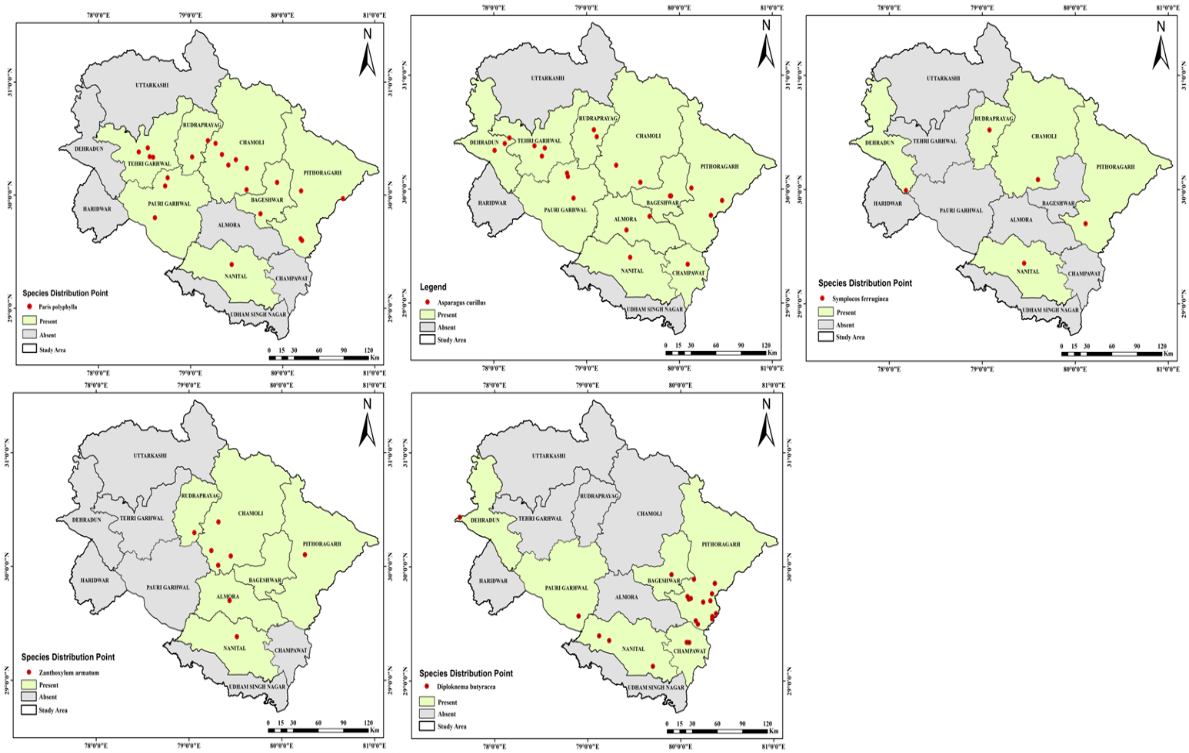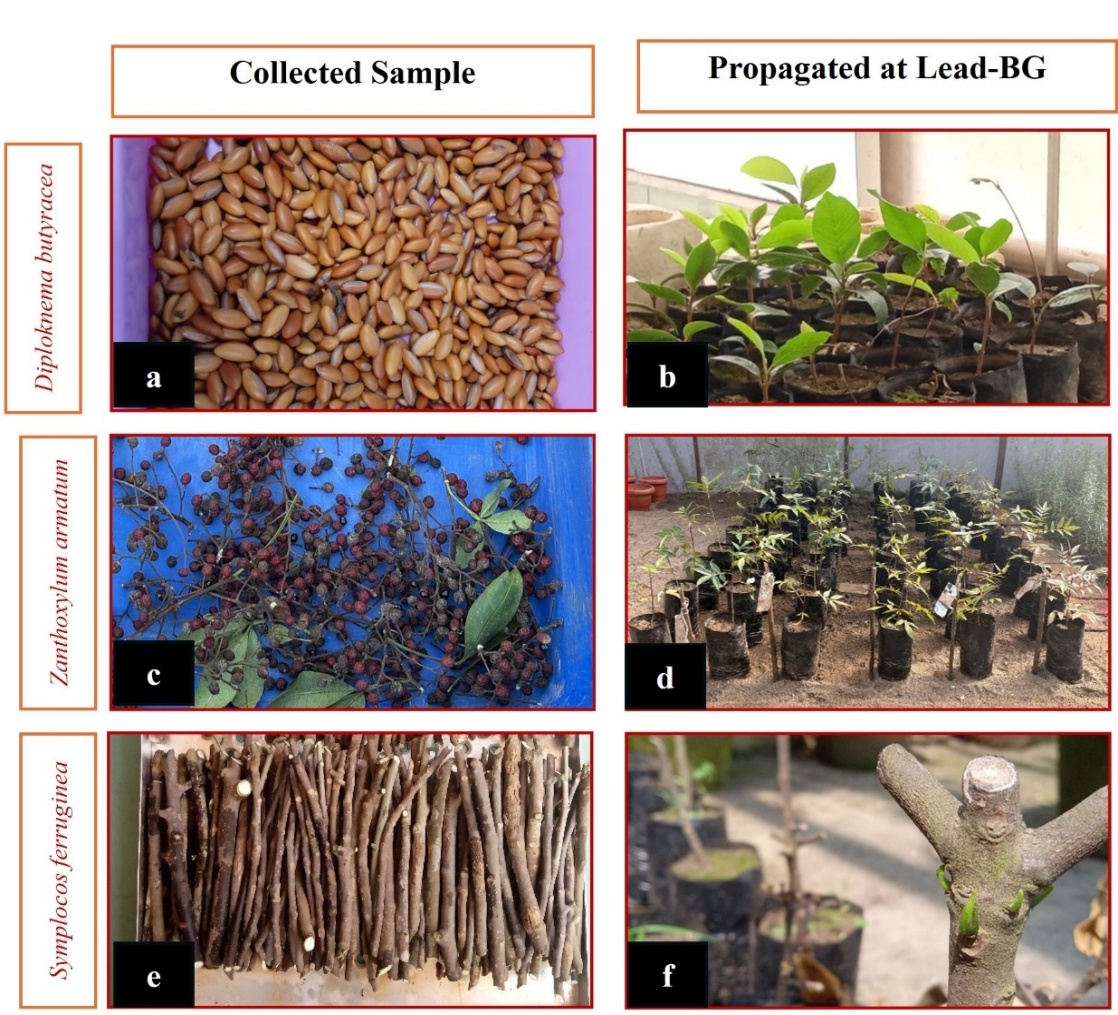Strengthening of Lead Botanical Garden for ex-situ Conservation and Knowledge Dissemination on Threatened and Endemic Plants of Himalaya (Phase - III) under Assistant to Botanic Garden Programme
Conservation of threatened and endemic (T&E) plant species is a growing concern in view of the continuous depletion of their populations in natural habitats. Reports indicated that the current species extinction rate is between 1000 and 10,000 times higher than it would be naturally (Bapat et al. 2012). Across the world, several in situ and ex situ conservation attempts have been made, especially through establishment of biosphere reserves, national parks, world heritage sites, botanical gardens, greenhouses, etc. However, the loss of species populations is continuing, which has resulted in considerable increase in number of red list of plants. Over the last 50 years, The IUCN Red List of plant and animal species has made significant contribution in guiding conservation action and policy decisions (http://www.iucnredlist.org). So far 74,000 species have been assessed by IUCN for threat status, which represents only 5% of species that have been described, and goal by 2020 is to assess 1,60,000 species. This scenario calls for more extensive assessment of species. Also, there is a need to develop suitable conservation strategies based on detailed knowledge on extent of availability, source specific variation in genetic makeup, propagation responses and change sensitivity, etc. Among others, the plant diversity in Himalaya is considered as a source of food, fodder, fuel, fiber, medicine, etc. and used for human sustenance since time immortal. However, with ever increasing demand of plant based raw material coupled with growing populations has resulted a rapid depletion in a large number of plant species in wild, especially those in high demand. Among others, the group of plants with known high value (medicinal, fuel, fodder, wild edible, etc.) represents one such case.
Importance of ex situ collections for conservation was realized when collection in botanical gardens and arboreta helped implementation of population management and recreation of several important plant species (Falk 1987, Sergei et al. 2009). Further, the propagation responses of threatened and endemic species are considered important for suggesting ex-situ and in-situ conservation measures. Especially in case of endemic plants, which perceived poor genetic diversity and slow propagation responses. Realizing the need of ex-situ backup for conservation of Himalayan plants, the institute (GBPNIHE) has initiated establishment of a functional arboretum Surya- Kunj in 1992 over 71-acre areas, ranging between 1100-1250m elevations. Through various rehabilitation mechanisms 'Suryakunj' started taking shape of an ex-situ conservation of representative species (especially) Threatened and Endemic ones and on the other hand acts as a site for nature exposure and learning for different stakeholders. The garden also supports the luxuriant growth of many lower groups of plants such as bryophytes, pteridophytes, mushrooms, lichens, etc. In addition, the garden supports over 150 avifaunal species represented to 24 families. Realizing the importance of ‘Surya-kunj’ as potential Botanical Garden, the Ministry of Environment and Forests & Climate Change, Government of India, declared the 5 ‘Surya-Kunj’ as a Lead Botanical Garden for ex situ conservation and knowledge dissemination. Keeping in view, the project objectives were formulated and achieved for conserving the targeted species in Himalaya.
Building on the achievements of earlier phases, Phase-III of the project was designed with the following objectives to further strengthen the Lead Botanical Garden:
Objectives of Phase-III:
1. To conduct scientific research for the development of effective propagation and multiplication packages for identified Rare, Endangered, and Threatened (RET) plant species.
2. To build the capacity of a diverse range of stakeholders (researchers, farmers, forest officials, etc.) in the areas of propagation, rehabilitation, and recovery of RET species.
3. To develop educational and awareness materials, and organize lectures, workshops, and training programs focused on ex situ conservation and sustainable utilization of Himalayan plant diversity.
Achievements:
• Systematic field surveys were conducted to assess the Population status of RET species—Diploknema butyracea (Ghat, Champawat), Symplocos ferruginea (Patwadangar,Nainital), Paris polyphylla (Lilam, Pithoragarth), and Asparagus curillus (Ramgarh, Nathuakhan, Gannath).
• Species distribution, abundance, regeneration, and conservation needs were assessed through field surveys.
• Germplasm of Diploknema butyracea, Zanthoxylum armatum, Symplocos ferruginea, and Paris polyphylla was introduced at the Lead Botanical Garden to support ex-situ conservation of RET species.
• Maintenance and Monitoring of germplasm at the Lead Botanical Garden as part of ongoing ex-situ conservation efforts, ensuring sustained growth and protection of these RET species.

**Source: Herbarium record housed in the Regional Ayurveda Research Institute (RARI), Ranikhet; Forest Research Institute (FRI), Dehradun, Botanical Survey of India (BSI), Dehradun, and Wildlife Institute of India (WII), Dehradun


